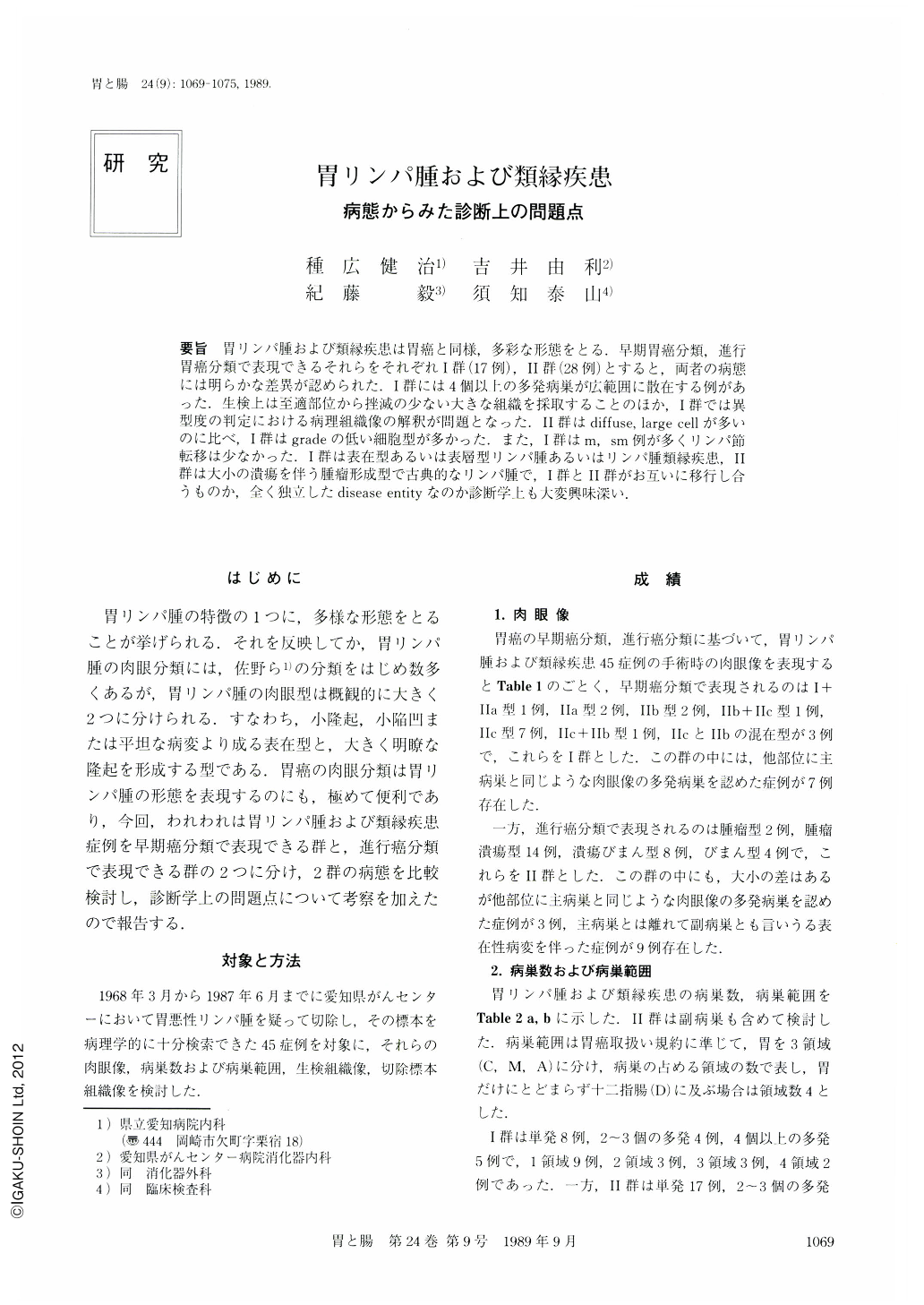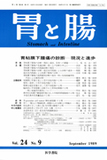Japanese
English
- 有料閲覧
- Abstract 文献概要
- 1ページ目 Look Inside
要旨 胃リンパ腫および類縁疾患は胃癌と同様,多彩な形態をとる.早期胃癌分類,進行胃癌分類で表現できるそれらをそれぞれⅠ群(17例),Ⅱ群(28例)とすると,両者の病態には明らかな差異が認められた.Ⅰ群には4個以上の多発病巣が広範囲に散在する例があった.生検上は至適部位から挫滅の少ない大きな組織を採取することのほか,Ⅰ群では異型度の判定における病理組織像の解釈が問題となった.Ⅱ群はdiffuse,large cellが多いのに比べ,Ⅰ群はgradeの低い細胞型が多かった.また,Ⅰ群はm,sm例が多くリンパ節転移は少なかった.Ⅰ群は表在型あるいは表層型リンパ腫あるいはリンパ腫類縁疾患,Ⅱ群は大小の潰瘍を伴う腫瘤形成型で古典的なリンパ腫で,Ⅰ群とⅡ群がお互いに移行し合うものか,全く独立したdisease entityなのか診断学上も大変興味深い.
In this report we classify gastric lymphomas and their related diseases macroscopically into two types, namely group Ⅰ (17 cases) which can be classified as early gastric carcinoma-like lesions, and group Ⅱ (28 cases) which can be classified as advanced carcinoma-like lesions.
Some obvious differences in clinicopathological findings are observed between the two groups.
In group Ⅰ, some cases have more than four leasions widely scattered in the stomach.
The most important requirement for gastric biopsy is to take a large area of material, with as little crushing as possible, from a location enclosing the most representative lesions, but the problem in group Ⅰ is the difficulty in differentiating lymphoma from benign diseases.
Many cases are of diffuse, large cell type in group Ⅱ; while cases of low grade lymphomas in group Ⅰ are more numerous.
And many cases of group Ⅰ have m or sm invasion of lymphoma without lymph node metastasis.
The lesion of group Ⅰ is a “superficial lymphoma”; while that of group Ⅱ is a “classical lymphoma” having a bulky mass with large or small ulceration.
The problem of whether the two groups are interrelated, or whether they are separate entities is worth further investigation.

Copyright © 1989, Igaku-Shoin Ltd. All rights reserved.


